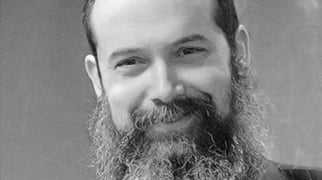I feel very fortunate. I'm currently on a weeklong pilgrimage in Eastern Europe: a journey to resting places of renowned Chassidic masters. This is far from a sightseeing tour; the primary purpose of these visits is to offer my prayers at these holy sites.
Now, I know that sincere prayer is effective anywhere, even in one's living room; we're never out of G‑d's earshot. So why am I here in Rostov, Russia, the resting place of Rabbi Shalom DovBer of Lubavitch, as I write these words?
Effective prayer is a bit of an art form. To find a sense of self-awareness, and the connection of self with the divine, one needs to cut through one's internal static, the sense of distractedness and self-absorption that comes with life.
In order to truly pray, you need to get into a "zone," and that's not as easy as it sounds In order to truly pray, you need to get into a "zone," and that's not as easy as it sounds. While Jewish law advances the synagogue and prayer group (minyan) as the most effective setting for prayer, our sages also suggest that periodic visits to a cemetery are advisable.
Why?
A. A cemetery – with its clear message of human mortality – is conducive to a sober, self-reflective attitude. It helps dispel the trivialities that cloud the mind and allows life's priorities to crystallize.

B. This sense of focus is often amplified when you visit the gravesite of a person with whom you have had a deep relationship—there you can revisit the relationship, perhaps reviewing the last interactions the two of you had while he or she was physically alive. This poignant, emotionally sensitive state of mind can be a helpful setting for proper prayer.
C. Practically speaking, different venues have varying effects on prayer. You can certainly pray while sitting in the stands at a Yankees game, but it's not a setting that's conducive to contemplation and introspection. On the other hand, the edge of the Grand Canyon would seem to present a much more contemplative ambience. As such, praying at the grave of a person who lived a committed, purposeful, inspiring, and holy life sets a particularly special tone.
D. Looking at the practical metaphysics of prayer, some places have better "reception" for our communications with the divine. To use a rather pedestrian example: We all know what it means to find the right spot for clear cellular communication. Some places are obviously better than others.
The air is less "polluted" and allows for prayers to more easily rise to the heavens Similarly, our sages speak of places that are conducive to prayer. There are areas – the Western Wall for example – where the air is less "polluted" and allows for prayers to more easily rise to the heavens.
The gravesite of a holy person is just such a place. The spiritual vibes that emanate from a holy person – and his or her resting place – create a "spiritual clearing" from which our sentiments are better able to ascend to more rarefied realms and find their mark.
E. During the course of human life, a person's soul is contained within his or her body. After the person's passing, the soul's transcendent levels ascend to higher planes, but the soul's interactive dimension, its interface with the human world, continues to resonate in the world he or she "left behind."

That is why Talmudic literature describes a righteous person's death as "he left life to the living," meaning that he has left life – spirituality, faith, love, etc. – to remain accessible to those who remain living on a physical plane.
In this sense, it is specifically after someone's physical passing that he or she is most accessible. While they were alive, we had access to them through their speech and actions, which were limited by the scope of their physical abilities, ability to communicate, etc. Now, the deceased's spiritual presence is accessible to anyone and at any time.
The only proviso is that we express a genuine desire to connect with that soul. And the Kabbalah teaches that the most effective point of interface is at his or her gravesite.
So, while G‑d can always hear my prayers, I need to be proactive in finding prayer's most effective and conducive settings.
While I've gone the unusual route of traveling across the world in search of this intimate connection, that's the exception.
You can frequently find me praying at the Rebbe's resting place in Queens, NY, looking for – and finding – connection.








Join the Discussion